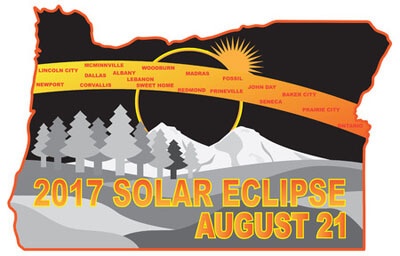
Gundersen optometrist stresses safety when viewing the Great American Eclipse
On Monday, August 21st, a total solar eclipse will span the United States from Oregon to South Carolina. The moon will cover at least part of the sun for two to three hours, with some areas experiencing totality (or complete blockage) for up to 2 minutes 40 seconds.
The 2017 Great American Eclipse is noteworthy because of its magnitude. Luther College Professor of Physics Jeff Wilkerson says, "We won't experience another solar eclipse of this depth until 2099." In Northeast Iowa, about 87 percent of the sun will be covered at the peak of the eclipse on Monday afternoon.
Gunderson Health System Clinical Optometrist Jennifer Gipp says, "Watching a solar eclipse is a memorable and awe-inspiring experience. However, staring directly at the sun can cause permanent damage to your eyes. Staring at the sun for even a short period of time without wearing the right eye protection can lead to solar retinopathy, which is damage to the retina that can cause irreversible blindness."
Dr. Gipp gives the following suggestions for safely viewing the eclipse:
- Only use eclipse glasses with an ISO 12312-2 international safety marking on them. Regular sunglasses or homemade filters will not provide sufficient protection to your eyes. Reputable vendors of solar filters and viewers can be found at the following website: https://eclipse.aas.org/resources/solar-filters
- Inspect your solar filter for punctures, tears, or scratches before use, and discard if damaged
- Do not remove eclipse glasses or solar viewers while looking at the sun. Wait until you turn away before removing them.
- Never look at an eclipse through a telescope without a solar filter on the large end of the scope
- Do not use binoculars or cameras, even if wearing eclipse glasses. These devices can magnify the sun's rays and negate the effectiveness of the protective eyewear.
Site designed and maintained by Iroc Web Design Services©.
Your Small Business Web Design Solutions.™


